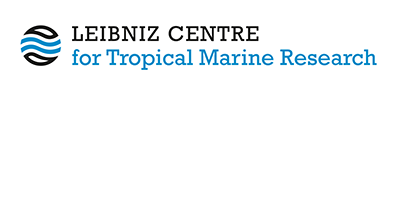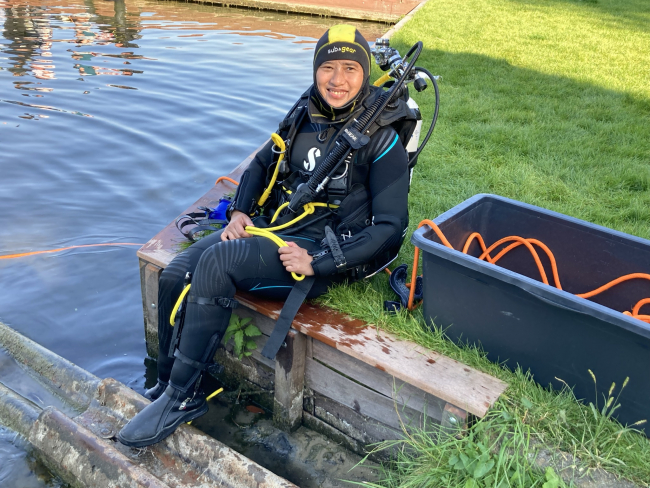22/09/2021 | “Diver in the water!” – yesterday this call rang out several times over the Stadtwaldsee in Bremen, as the ZMT’s scientific diving team was finally able to start a new training course after a break of 18 months due to the pandemic.
In front of the DLRG station at the back of the lake, training in emergency situations was on the agenda on this sunny September day. Safety is the top priority in training, emphasises Dr Michael Schmid, head of the Scientific Diving Centre at ZMT. That's why this topic is repeated a lot during practice, various accident scenarios are simulated and the rescue measures to be taken are repeatedly acted out. “It just has to run smoothly,” says Schmid.
For more than eight years, he has been offering the course together with co-trainer Dr Andreas Kunzmann and the experienced ZMT scientific divers Uli Pint, Stefanie Bröhl and Dr Sebastian Ferse. The Scientific Diving Centre at ZMT is one of eight training centres in Germany.
The practical part of the programme, in which experienced divers are trained as scientific divers, lasts five weeks. The theoretical part was already taught online in early summer. At the end – assuming successful completion – an highly valued certification awaits: the Europe-wide recognised qualification as a scientific diver and European Scientific Diver (ESD) certified by the Berufsgenossenschaft der Bauwirtschaft.
Alongside a ZMT doctoral candidate, ten international doctoral students from the 4D REEF project are taking part in the course this year. The EU-funded project creates a training environment in which 15 young researchers can earn their doctorates. “In addition to the individual research projects of the PhD students, a number of special training courses are an integral part of the programme, so-called Network and Specialised Training Activities (NTAs/STAs). ZMT offers the scientific diving course as an STA,” explains Dr Sebastien Ferse, member of the diving team and head of a sub-project of 4D-REEF at ZMT. “Many of the PhD students will later work in the field in Indonesia. So by taking this course, they will have all learned the same standards and can also form dive teams to work on reefs underwater.”
Estradivari Sant, a doctoral candidate from the 4D-REEF project, is doing research at ZMT. “I just ran a scenario where my dive partner pretended to be unconscious,” says the Jakarta-based scientist as she sit on the edge of the jetty in full scuba gear with a cylinder of compressed air on her back. ”I had to get my dive partner out of the water onto land and put him in the recovery position,” she recalls. Estradivari has been diving for more than 20 years. Without these years of experience, she would not have been able to take part in the course.
“You need proof of a CMAS two-star diver or Padi Rescue Divers certification and you must have 30 diving hours in your logbook, of which five dives must have been deeper than 25 metres and 15 dives must have been at depths of 15 to 25 metres,” explains scientific diving leader Schmid.
Weather permitting, Schmid and his team will spend some more time at Stadtwaldsee next week watching over the course participants. Everyone is glad that things could finally get started again, as the course was actually supposed to take place last spring. “Everything was organised, then the first Corona lockdown came and we had to cancel the course,” Schmid recalls. “Now we are just happy that we can finally dive again and pass on our knowledge.”
Left:
Research Diving Centre: https://www.leibniz-zmt.de/de/forschung-infrastruktur/forschungstauchzentrum.html
4D-REEF
https://www.leibniz-zmt.de/de/forschung/wissenschaftliche-projekte/4d-reef.html





